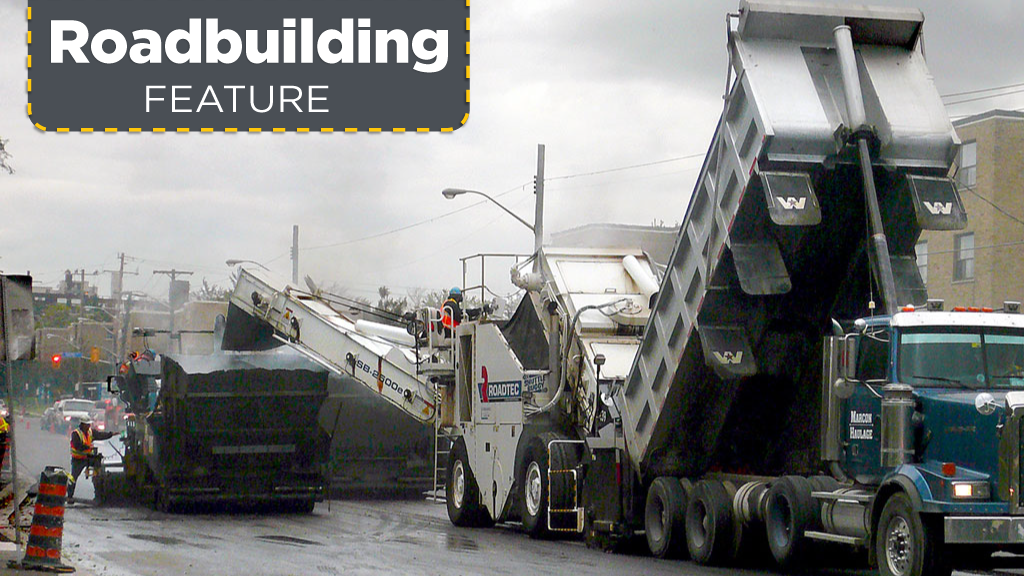You wonder what ancient Roman engineers would think about modern road design.
Their multi-layer aggregate roads were long and straight with no curves, few intersections and came in three flavours: a public road, a high-ranking official’s road and a military use road for moving men and equipment to where it was needed quickly.
And they lasted almost forever.
Of course, back then there wasn’t as much traffic and it didn’t include giant tractor trailers carving wheel ruts.
Flash forward 2,000 years and there’s a plethora of road designs with Ontario about to introduce yet another classification: The 2+1.
It joins all the other road and interchange classes such as the complete road, composite road, roundabout and double roundabout. Not to mention “under construction,” “closed” and “detour.”
Ontario is planning a 2+1 highway pilot for Highway 11 north of North Bay, which is to be the first-of-its-kind in North America.
It’s a three-lane highway with a centre passing lane which changes direction every two to five kilometres. It’s similar to the city of Toronto’s reversible lane system on Jarvis Street in which the centre lane changes direction to the south in the morning rush hour and north in the evening, marked by small red or green lights hanging overhead.
It’s an interesting idea, says traffic engineer Keith Boddy, but the only fly in the ointment is drivers themselves.
“We see different approaches coming in and people like to get creative across our industry,” he says. “These are always site specific though and a handful make sense.”
But it’s always the driver who is the weakest link, he adds.
“The driver has to learn,” he says. “And that comes down to education.”
The sudden introduction of new designs or configurations can stress drivers and cause the very problems they thought they were mitigating.
Roundabouts are an example of a design technology to de-stress decision-making for drivers and while widespread in Europe have only recently gained traction in Ontario.
In practice they are simple and useful when two or more roads intersect or when roads intersect at different angles.
Drivers enter into the circle and follow around until they can take their exit and if they miss it they have an opportunity to go around again and better position themselves without having to take the wrong exit.
A Diverging Diamond Interchange was introduced in St. Catharines last September which eliminates left turns when entering or exiting the highway through cross over lanes controlled by traffic lights. It’s the first in Ontario and the third in Canada with others in Alberta and Saskatchewan.
It is projected to reduce collisions by 33 per cent and cut injuries and deaths by up to 60 per cent.
Then there are the complete roads, urban designs that separate pedestrians, cyclists and vehicles while forward thinking design is being introduced to the Highway 413 design to allow sketched in right of ways for the future addition of dedicated bus lanes.
“Strangely though what looks complex and stressful can work well,” Boddy says. “There’s an M25 interchange in London which from the air looks like a squid battling an octopus but on the ground works very well.”
One thing that won’t change is the demand for roads is only going to increase, regardless of the energy used to fuel those vehicles.
“You’ve got countries like China with a growing middle class who want to buy cars, creating traffic issues. We’re not sure anyone has the correct answer.”
Personal transportation has evolved at light speed comparative to road design, he says, with the 1920 Ford Model A being an example of a top-of-the-line vehicle in its day.
Modern vehicles are faster, heavier and have more technology on board such as lane alignment and collision alerts. Soon they may be self driving but that creates another road hazard, Boddy says.
The problem with technology is that it’s also a distraction from the task of driving but we’ve evolved into a culture that thinks piloting a vehicle is simply a matter of firing up and getting going.
What’s needed isn’t necessarily more innovative road design but more driver engagement, he says.











Recent Comments
comments for this post are closed